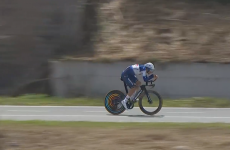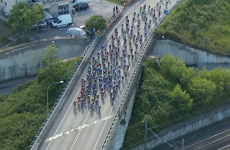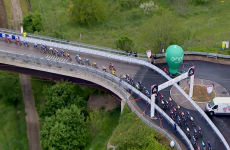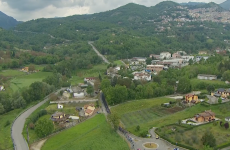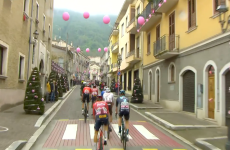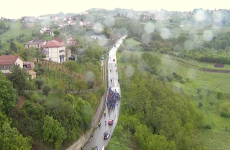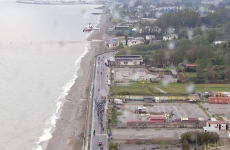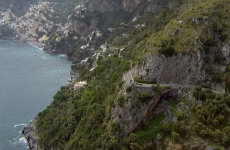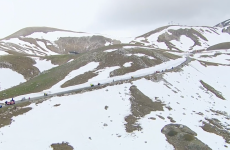Description
May 11, 2023
Giro d’Italia 2023 – Stage 6 – Napoli – Napoli : 162 km
Falling in May, the Giro d’Italia welcomes in the start of the much-anticipated Grand Tour season.
Show more...
May 11, 2023
Giro d’Italia 2023 – Stage 6 – Napoli – Napoli : 162 km
Falling in May, the Giro d’Italia welcomes in the start of the much-anticipated Grand Tour season. This is the time of the year where we see the climbers finally emerge, all vying for the same coveted prize – the coveted maglia rosa, or pink jersey. As is the case with all Grand Tours, the Giro route changes year on year as organisers send it around new areas of the country, seeking out ever more challenging parcours. Despite the route changing every year, the format remains very much the same. With a route that features no fewer than three individual time trials – adding up to a total distance of 73km – this year’s race looks set to favour those riders who are strong against the clock. There’s no shortage of legendary mountain passes though, in addition to three time trials the riders will also be faced with summit finishes atop Gran Sasso d’Italia, Monte Bondone and Tre Cime di Lavaredo. Across this year’s 3,481.9km-long route, riders will encounter no less than 54,331m of climbing – almost 2,000m than last year’s, an edition described by many as one of the most mountainous in years! Taking the sheer amount of climbing and abundance of ITT kilometres into account, this year’s Giro looks set to be one of, if not the hardest in recent memory.
Mads Pedersen (Trek-Segafredo) finally got his Giro d’Italia sprint win in Naples after the peloton caught breakaways Simon Clarke (Israel-Premier Tech) Alessandro De Marchi (Jayco-AlUla) with just 300 metres to race.
The Dane had the speed to chase down Fernando Gaviria (Movistar), who jumped early and then held off Jonathan Milan (Bahrain Victorious) to win with his arms in the air.
Pascal Ackerman (UAE Team Emirates) was third, with Kaden Groves (Alpecin-Deceuninck) fourth and Gaviria fifth.
Remco Evenepoel (Soudal-QuickStep) enjoyed a quiet day in the peloton after his crashes on stage 5 and his injuries. Andreas Leknessund (Team DSM) also finished in the peloton and so retained the maglia rosa for Friday’s first mountain stage to Gran Sasso d’Italia.
The 218km stage into the high Apennines will be a real test for both of them. Rain and snow are not expected, but the riders will climb through snow banks and up to an altitude of 2,130 metres.
Pedersen had finished second in Melfi and third in Salerno on Wednesday. The 2019 World Champion has now won stages in all three Grand Tours.
“I’m pretty happy. It’s what we came for. It’s nice to have a victory now,” he said. “It was a tough day for the team, and it’s nice to pay them back with this victory. So it’s a good day.”
Pedersen had to play a game of patience and tactics in the chase and especially when Gaviria jumped early.
“It was pretty close in the end, it was not easy to catch them,” he said of De Marchi and Clarke.
“For a long time, they still had two minutes, and we had to basically use everyone and not only us, all the sprinters had to use all the guys we had available. I feel sorry for those guys because they did really well, but I’m happy I could take the win.”
How it unfolded
After the rain and crashes of stage 5, the riders were happy to see the sunshine over Naples on Thursday morning as they prepared for a ride around Mount Vesuvius, along the spectacular Amalfi coast and back into Naples.
Despite all the crashes and injuries, the only non-starter was Clément Russo (Arkéa Samsic), who tested positive for COVID-19. Remco Evenepoel, Mark Cavendish, Filippo Fiorelli and Andrea Vedrame and everyone else licked their wounds, clicked in the pedals and raced on.
The 162km stage started with an extra long neutralised sector as a number of riders punctured and the peloton waited for them. When the flag finally dropped, the attacks immediately with Alessandro De Marchi (Jayco-AlUla) especially aggressive on the ride out of Naples.
Francesco Gavazzi (Eolo-Kometa) soon joined him, as did Alexandre Delettre (Cofidis), Simon Clarke (Israel-Premier Tech) and Britain’s Charlie Quarterman (Corratec-Selle Italia). Alessandro Verre (Arkéa-Samsic) tried to cross to them but ended up suffering in no man’s land. Behind the peloton soon blocked the road, signalling they were happy with the break, and so the gap rose to beyond a minute.
Quarterman beat Gavazzi and Clarke to win the first intermediate sprint after a fast opening 34km, and the break was given a leash of three minutes until Team DSM took over to defend the maglia rosa.
After passing spectacular Pompei, the race climbed the Valico di Chiunzi, the climb made famous by Marco Pantani in 1997 when he hit a cat at 85 km/h. He rode to the finish, but his Giro was over. The year after, he won both the Giro d’Italia and the Tour de France. In 1999, he was disqualified from the Giro due to a high blood haematocrit value, and his career and life spiralled out of control. Pantani died of a cocaine overdose in 2004.
The 8.3km Valico di Chiunzi climb hurt the peloton, with a number of sprinters and crash victims spat out the back.
The break extended their lead to 5:30, but then Ineos Grenadiers took over on the front. They upped the pace and lined out the peloton, hurting everyone and exposing the weaknesses in the Soudal-QuickStep team. Mark Cavendish was distanced with several of his Astana Qazaqstan teammates, along with others.
Gavazzi led over the top of the Valico di Chiunzi, catapulting him up to fourth in the mountain classification. However, he is still some way off maglia azzurra Thibaut Pinot, who has accumulated 40 points in the early stages of this year’s race.
Ineos Grenadiers’ pacing cut the gap to the break by 30 seconds, and the British team also led the peloton down the testing descent and onto the Amalfi coast. There were suspicions that Ineos Grenadiers were trying to hurt Evenepoel with their high pace, but once on the coastline, Bahrain Victorious and Jumbo-Visma took over on the front of the peloton.
However, the pace remained high, with everyone concerned about crashes on the narrow coast road. Cavendish was two minutes behind, his chances of contesting the sprint over. A crash at the foot of the Valico di Chiunzi descent made his day even more painful, but he would finish in the gruppetto at 18:25.
The helicopter shots of the Amalfi coastline were stunning, but the pace was far too high for the riders to enjoy the view. They had to dive into and out of the hundreds of curves on the coast road and then into and out of tunnels.
The road also rolled up and down the cliffside, and the third-category Picco Sant’Angelo caused even more pain. De Marchi and Clarke decided it was time to up their effort and challenge the peloton. They jumped away together on the Picco Sant’Angelo and pushed on, knowing the sprint teams would have to pace their effort over the climb.
Gavazzi, Quarterman and Delettre were left behind and eventually caught by the peloton, but De Marchi and Clarke formed a strong and united tandem. The race quickly flipped around onto the Sorrento Peninsula, the glistening Mediterranean now on the riders’ left as they headed back to Naples.
With 50km to race back to Naples, the peloton was at 2:30, with Cavendish at 9:20. Trek-Segafredo’s Amanuel Ghebreigzabhier did a lot of the chasing, with Jasha Sütterlin (Bahrain Victorious) and Florian Stork (Team DSM) coming to help him.
Clarke and De Marchi pushed on around the Gulf of Naples in the shadows of Mount Vesuvius. Their lead was still 2:15 with 27km to go, but the sprinters’ sensed their chance and drove their teams on in the chase. Alpecin-Deceuninck joined the chase, convinced Groves had a chance for a second consecutive victory.
The overall contenders had enjoyed a quiet, if nervous, day. Then the Giro d’Italia struck again. With 15km to go, Primož Roglič (Jumbo-Visma) suddenly needed a bike change after an apparent crash. He got back on, but then Geraint Thomas (Ineos Grenadiers) dropped his chain and needed some hard work from Filippo Ganna and Ben Swift to drag back into the peloton. They only made it back with five kilometres to go.
With 10km to go, Clarke and De Marchi had a lead of a minute, but the speed in the peloton was high, with Movistar chasing for Gaviria and Bahrain Victorious for Jonathan Milan.
For a moment, the sprinter’s team seemed to have given hope of catching Clarke and De Marchi and Ineos Grenadiers went on the front to keep Thomas and Geogheghan Hart out of danger.
Fortunately for the sprinters, Clarke and De Marchi had to battle into a stiff headwind along the Naples seafront and that hurt them and cost them precious seconds. They also began to play games, with De Marchi later admitting he missed some turns in the hope of beating Clarke in a long sprint.
Their calculations failed to pay off, and suddenly the peloton closed the gap inside the final kilometre. As the finish line came into sight, Clarke tried to sprint, but it was all too late. The peloton swept them up and ended their dreams.
Like a cat on a hot tin roof, Gaviria tried his now trademark long sprint, but Pedersen was there, sprinted with intelligence and technique and took the win.
Results :










